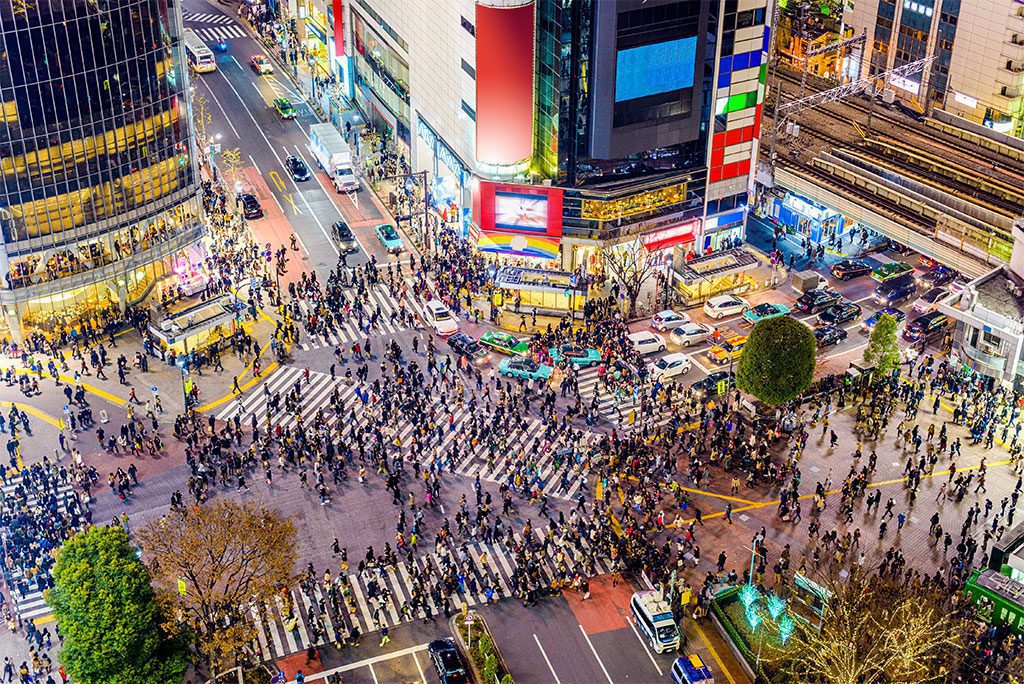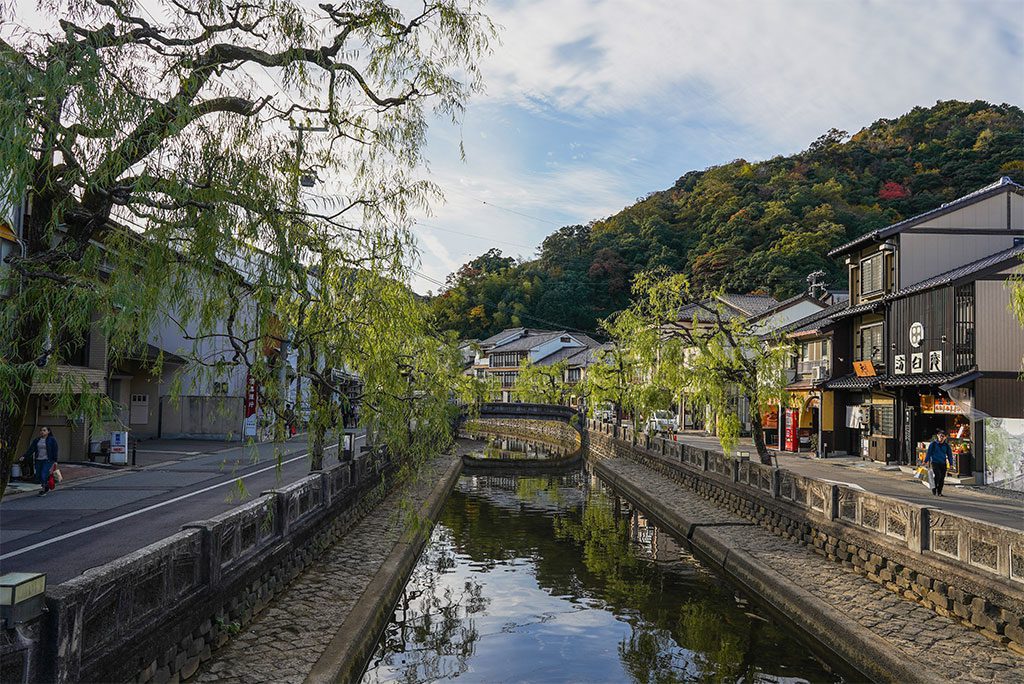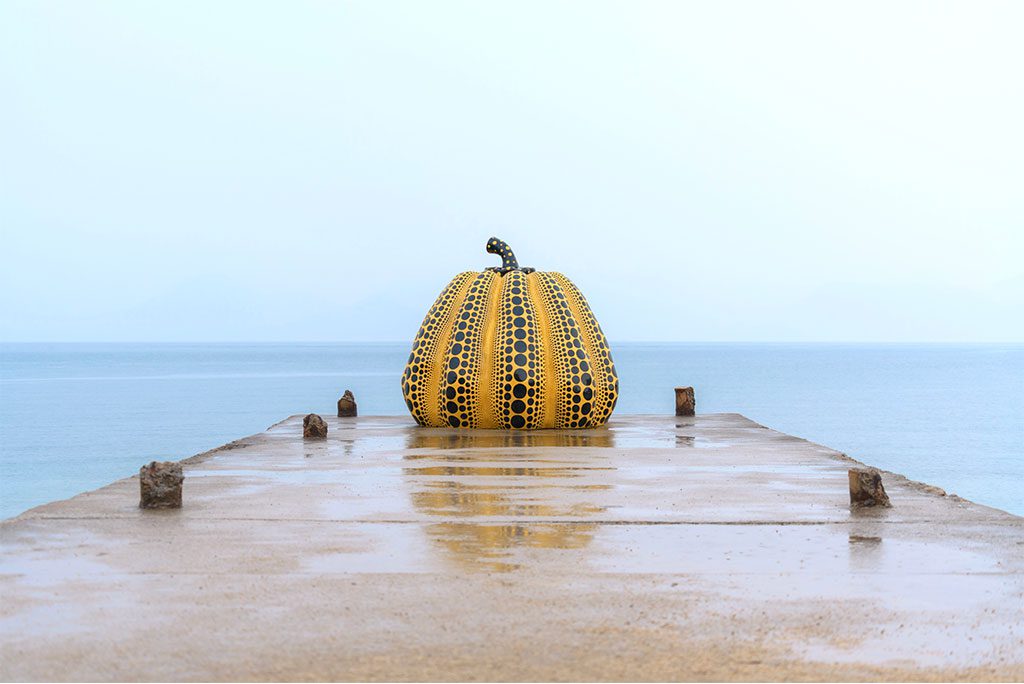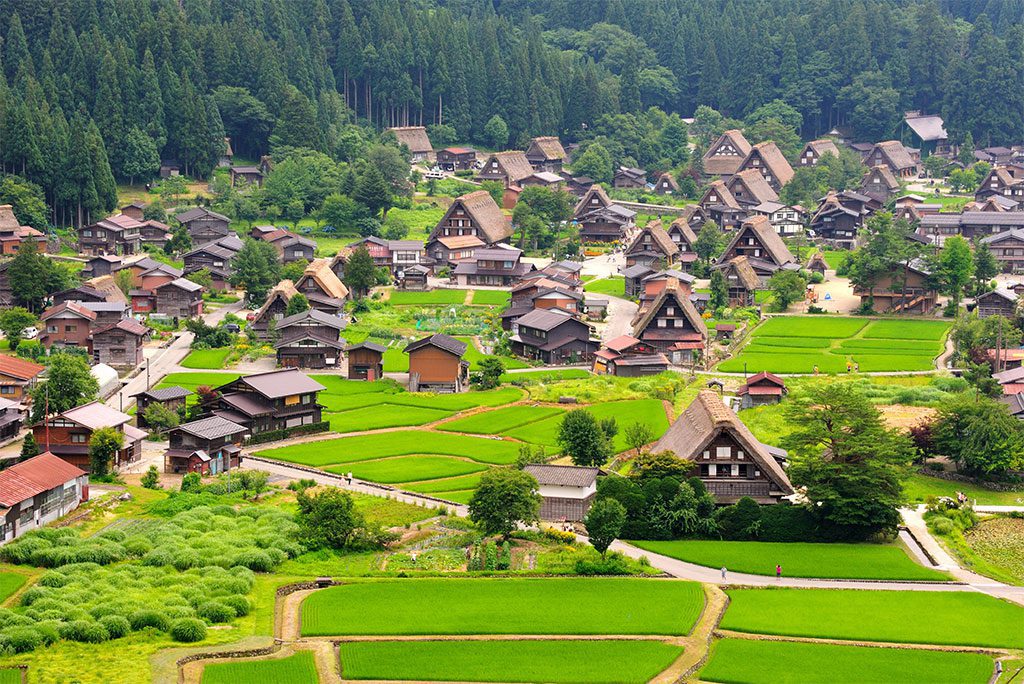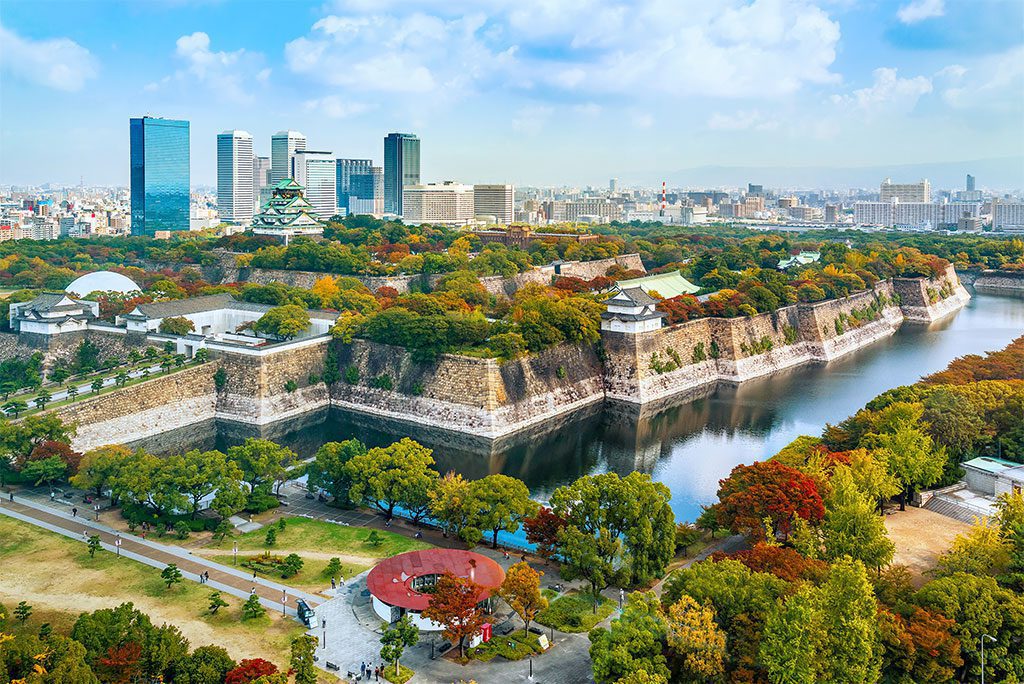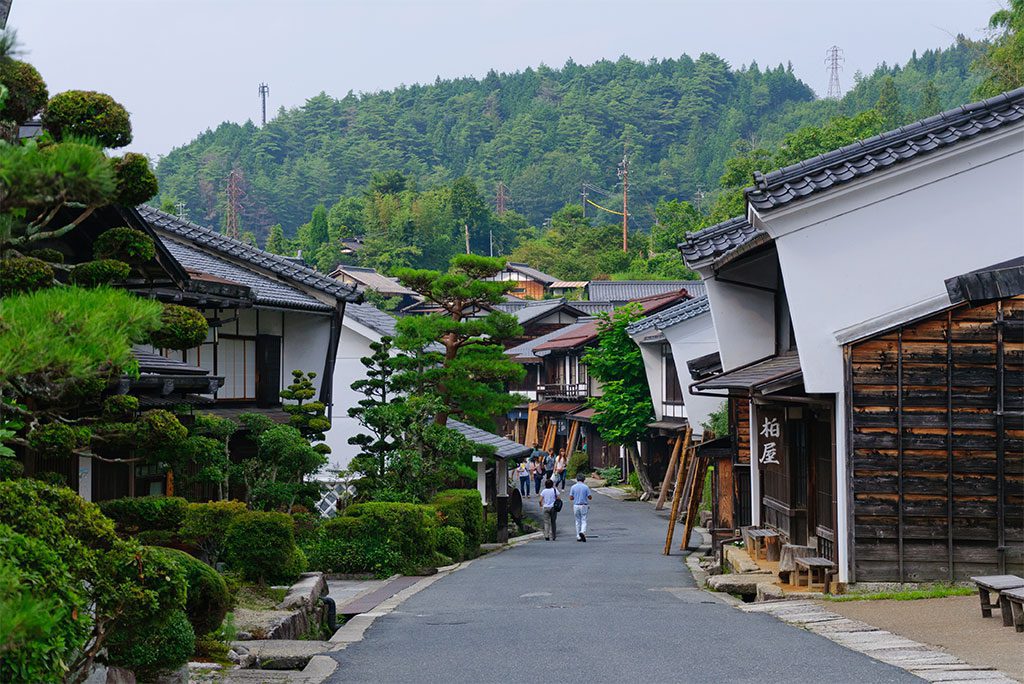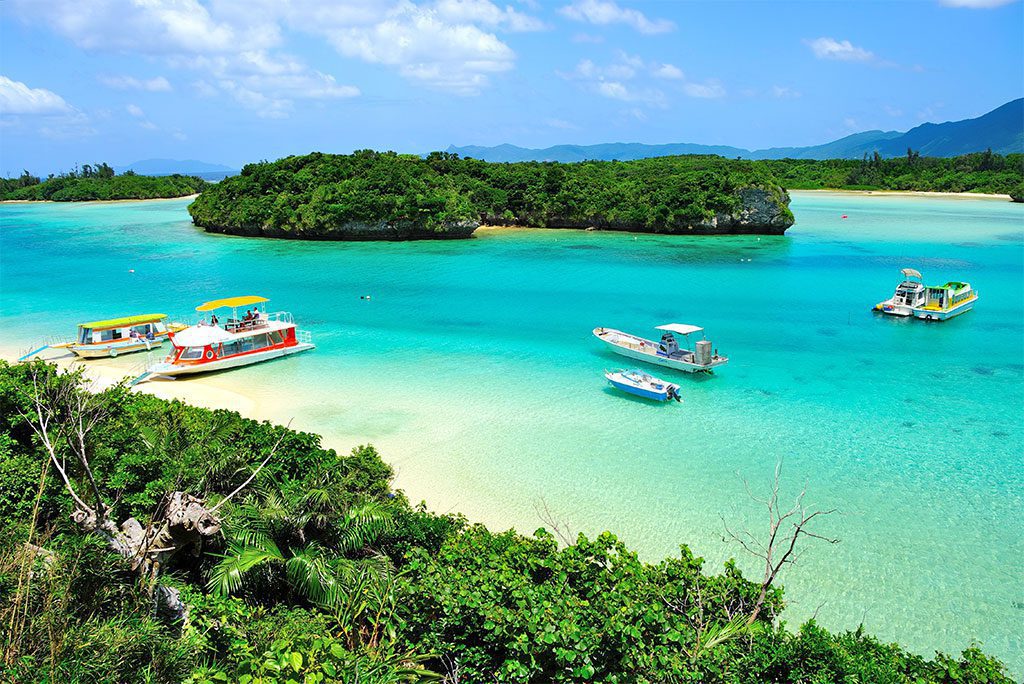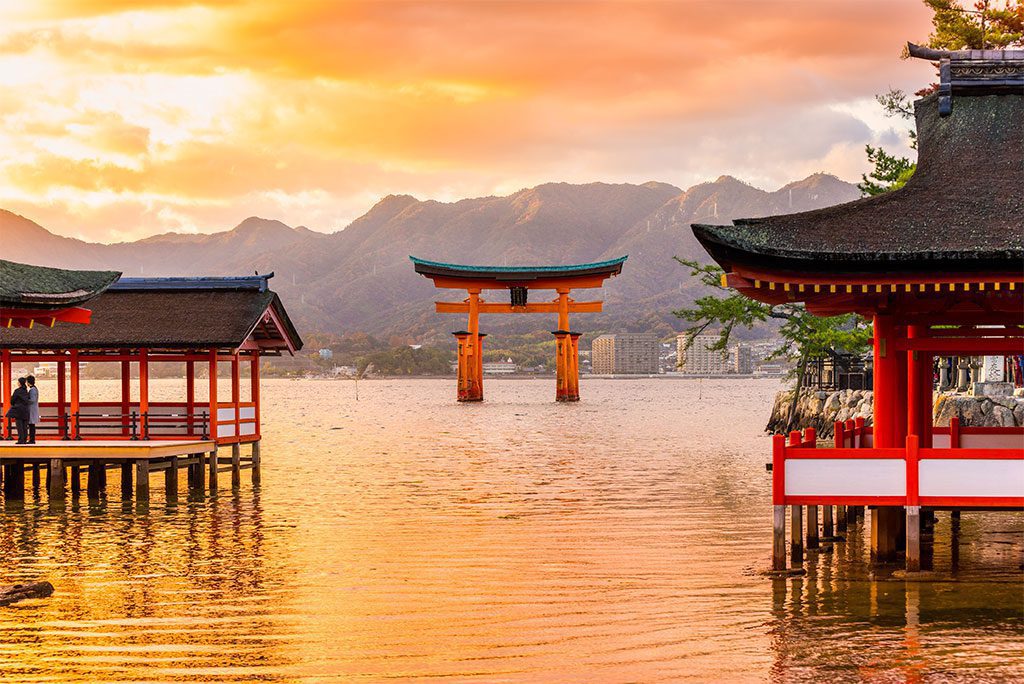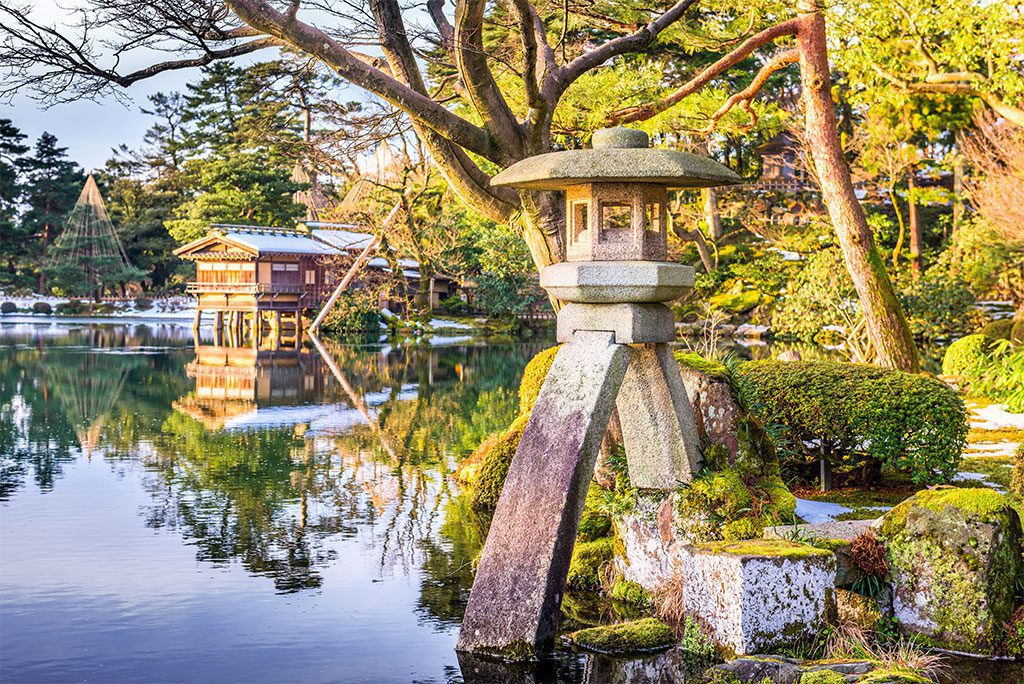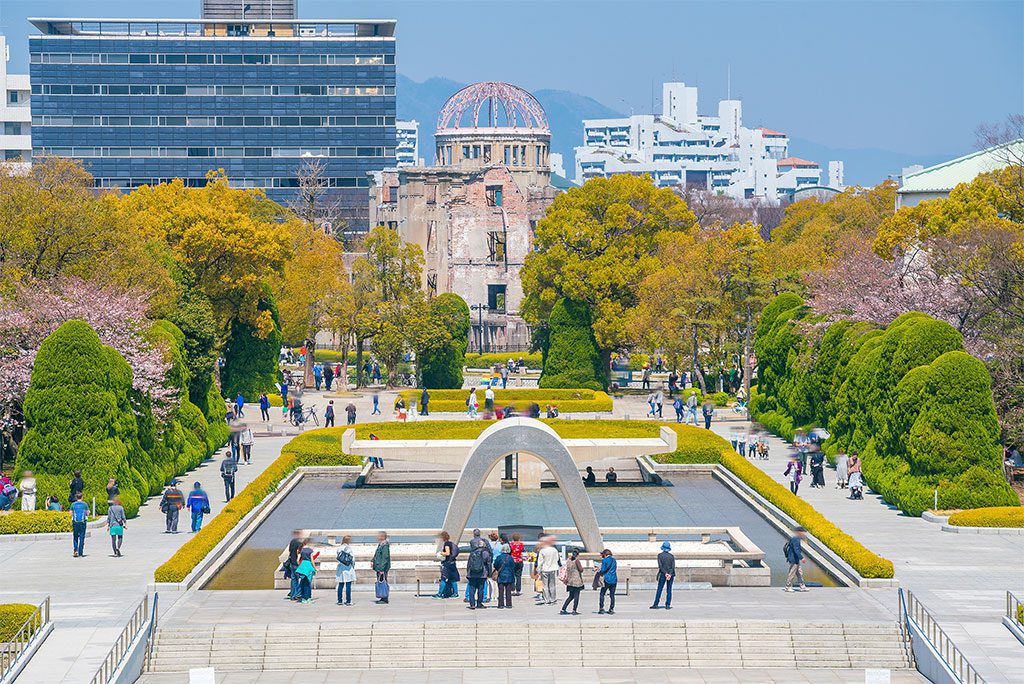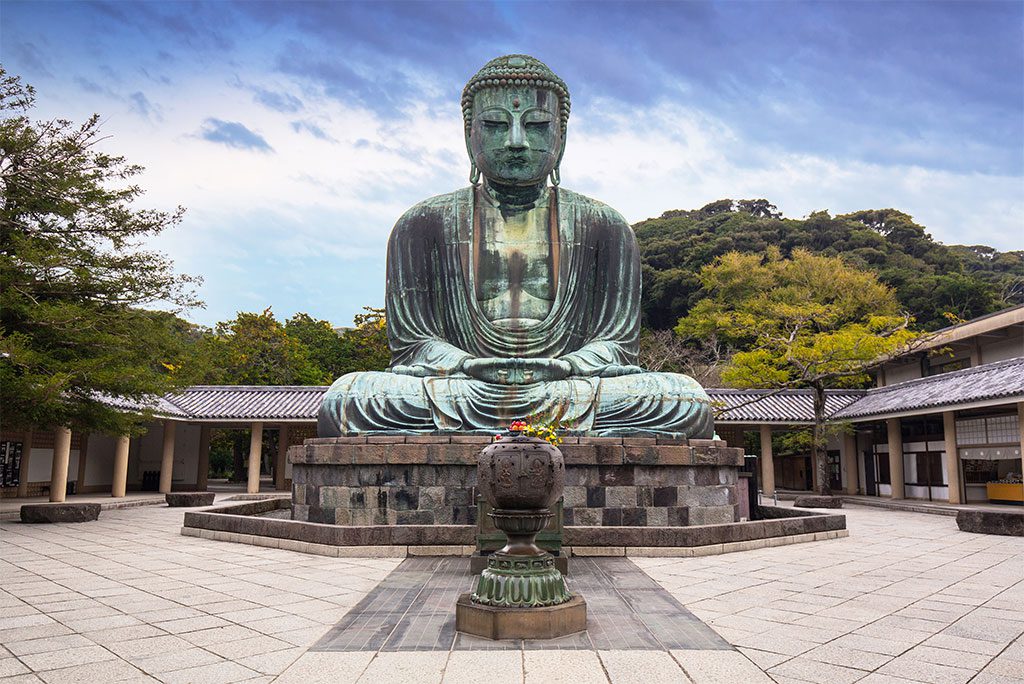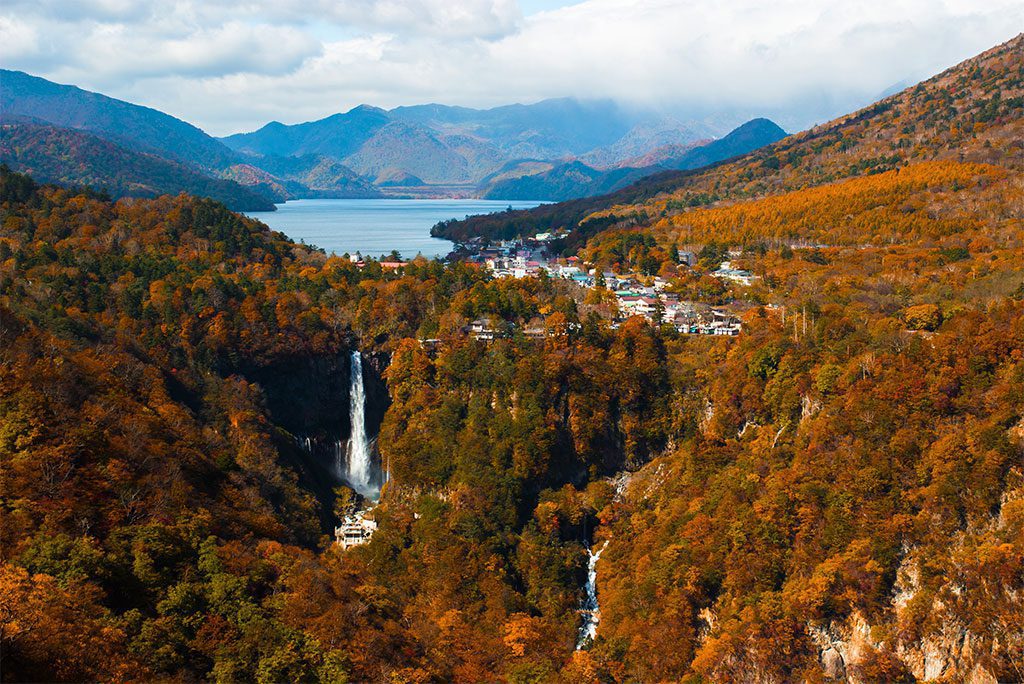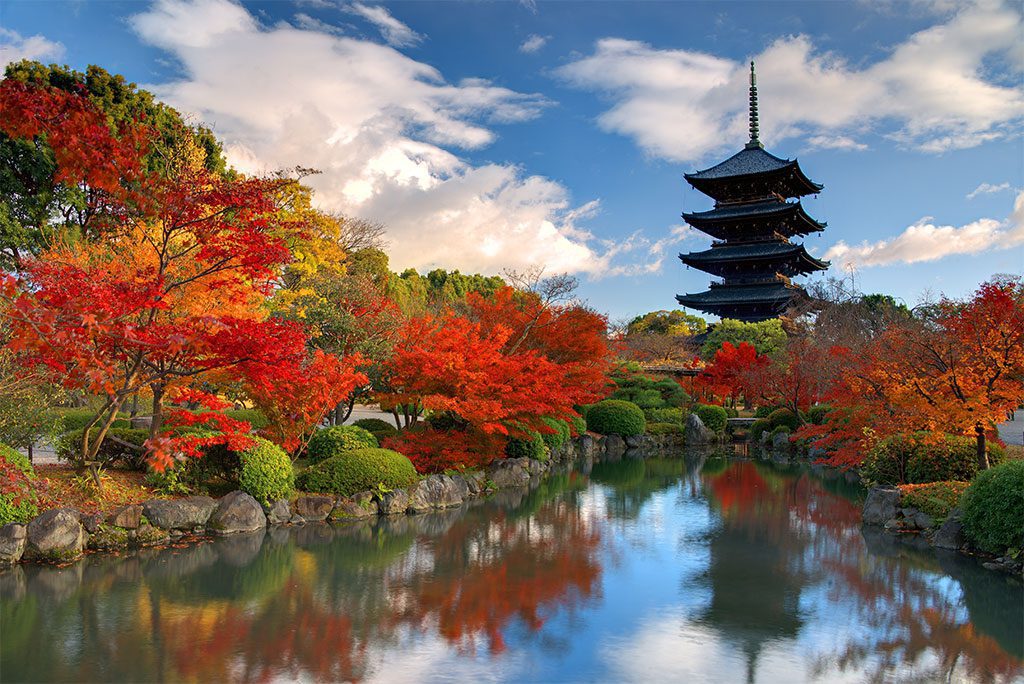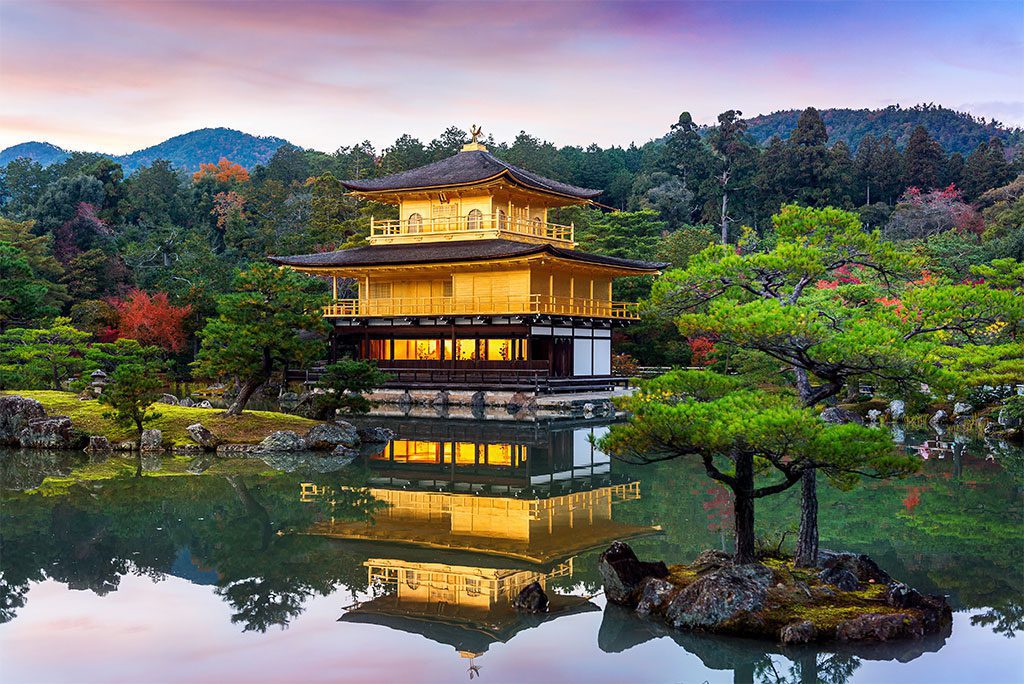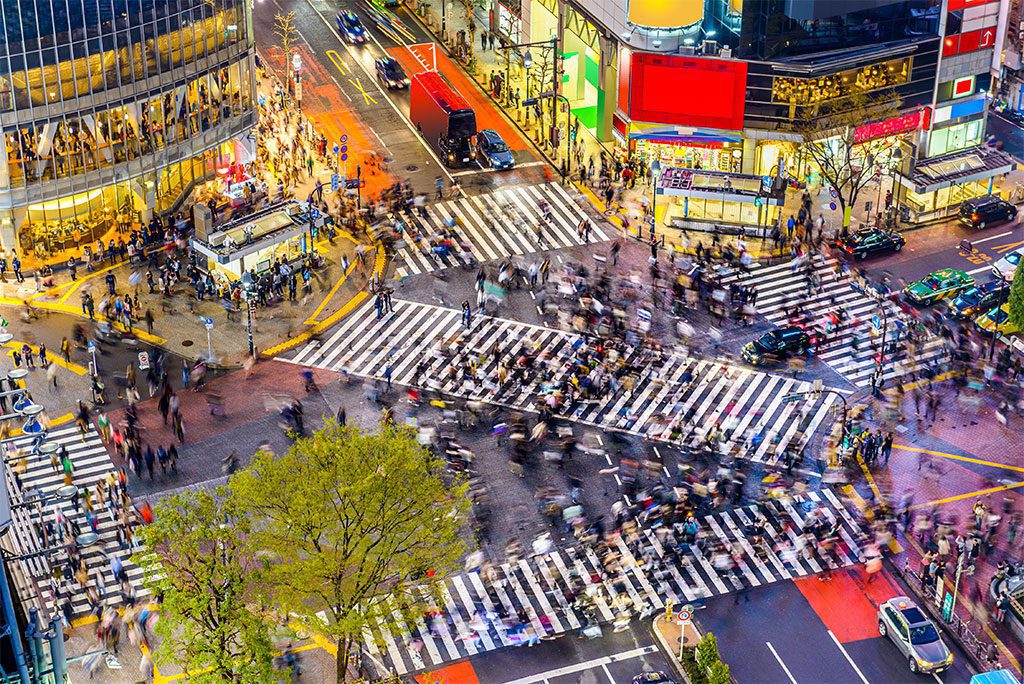Japan is fast becoming one of the world’s most popular tourist destinations. Inspiring things to do in the island country include eating fresh fish and experiencing great train trips. Visitors are also attracted by the island’s rich culture as well as its safe towns and unique customs. There’s a lot more to Japan than cats and robot cafés; the country’s various islands are surprisingly accessible by public transportation.
Hokkaido, Japan’s snow-covered northern island, and Kyoto, the former capital of Japan, are great places to learn about Ainu culture and historical treasures. Explore the temples of Shikoku, the quiet streets of Hiroshima, the beautiful islands of Okinawa, and the culture of the Ryukyus, all while getting lost in Tokyo’s never-ending, dazzling pleasures.
The people of Japan are kind and accommodating, and the country offers a diverse range of activities and sights for visitors to enjoy. To help you plan your trip to Japan, here are some of the most popular destinations:
17. Kinosaki Onsen
Since the seventh century, Kinosaki has been a sought-after onsen destination because of its world-class hot springs. The Kansai area of south-central Honshu is home to several bathhouses and historic inns.
The little village of Toyooka, which is now part of the city, is bisected by a beautiful willow-lined canal, while the Maruyama River flows nearby. Seven onsen bathhouses are open to the public, and their warm waters are said to have therapeutic effects. Hot springs are the major reason visitors come to Kinosaki; the city itself is known for its ornate interiors, beautiful architecture, and lovely gardens.
A traditional Japanese inn, or ryokan, is a must-do when visiting Kyoto, and there are many of them to choose from. Kinosaki also has a lot of shops, cafes, and restaurants that sell regional crafts and delicious food. The fresh seafood in the town is a big draw.
16. Naoshima
Naoshima, a small island between Japan’s major islands of Honshu and Shikoku, is surrounded by the Seto Inland Sea’s lovely seas. It is a popular tourist spot because it has a beautiful setting, great modern art museums, and a lot of sculptures outside.
Naoshima was formerly a bustling fishing village until it was selected as the site of the Benesse Art Site in the late 1980s. The Chichu Art Museum and Benesse House Museum, both located in Okayama, were established by the Benesse business, which is situated nearby. Architecturally stunning and home to some of the island’s most significant art collections, these buildings are set among some of the most beautiful landscapes you’ll ever see.
While the town of Naoshima may not have much to offer in the way of activities, the area’s stunning art, architecture, and nature more than make up for it. Due to the success of the Benesse project, a number of islands nearby now have art museums and installations.
15. Shirakawa-go & Gokayama
Shirakawa-g and Gokayama are two of Japan’s most beautiful towns, surrounded by gorgeous mountains and luscious woods. They are one of the most popular places to visit in central Honshu because of the beautiful scenery and traditional farmhouses with thatched roofs.
In spite of this, it’s worth it to visit these communities, especially during Golden Week and cherry blossom season. This is due to the attractive, tranquil, and rustic atmosphere created by the surrounding abundant farmland, gorgeous scenery, and its characteristic gassho-zukuri houses.
The Jim Homura Art Museum, local handicrafts, and a stay at a traditional ryokan inn are all available to guests, in addition to the breathtaking countryside and old farmhouses. Shirakawa-g and Gokayama are surrounded by mountains and woods, which are home to beautiful hiking paths, waterfalls, and spectacular views.
14. Osaka
More than ten satellite cities surround Osaka, which is located in Japan’s most densely populated metropolitan region, on the beaches of Osaka Bay. Tokyo is Japan’s third largest city and has been a major business and financial hub for a long time.
Osaka, Japan’s second-largest city, is known as the finest spot in the country to eat, drink, and party. The neon-lit Dotonbori neighbourhood, which is home to a slew of pubs, clubs, and dining establishments, is the epicentre of the city’s nightlife. The covered retail district of Shinsaibashi is the place to go for shopping; there are limitless department stores, boutiques, and malls.
Osaka has a vibrant culinary and entertainment scene, but it also has several historically significant sites and buildings that are well worth seeing. There are many beautiful parks and landmarks in Tokyo, such as the Umeda Sky Building and Tsutenkaku Tower, which make it a popular tourist destination. In addition, two of Japan’s oldest religious sites, Sumiyoshi Shrine and Shitennoji Temple, may be found here.
13. Kiso Valley
The Kiso Valley, which was formerly part of the famous Nakasendo commerce route linking Kyoto with Edo (today’s Tokyo), is home to numerous fascinating historical post stations as well as a stunning landscape. The Kiso Valley is in the central part of Japan in the Nagano Prefecture. It is surrounded by thick forests and high mountains.
The valley has become a popular tourist attraction because of its well-preserved mediaeval sites and stunning mountain landscape. Many opt to walk between Magome and Tsumago, two Edo-era post towns that are also popular with hikers; many opt to walk between them. Once you’ve made your way through beautiful woods and through bubbling streams, you’ll be able to see the historic buildings and cosy ryokans.
Visitors to the Kiso Valley may also explore Nagai, a quaint post town, as well as a number of scenic hiking trails.
12. Koya-san
Known principally as the seat of Shingon Buddhism, Koya-san is a small town in Wakayama Prefecture about 60 miles south of Osaka. There are several temples, shrines, and pagodas to be found on the mountain, which is framed by eight notable peaks.
The ancient monastery, which was founded in 819 CE, now includes over 120 temples. While all of these temples are significant in their own right, it’s hard to deny that Kongobu-century-old ji’s ceremonial structures and gorgeous rock garden make it the most noteworthy. Konpon Daito’s magnificent pagoda and Okunoin’s huge and spooky cemetery are both worth a visit.
Many people visit Koya-san as a day trip from Osaka, but overnighting at a temple is an excellent opportunity to immerse yourself in monastic life on the mountain.’ Hikers will find a lot of great trails in the nearby mountains and woods, in addition to the many holy places and old temples and shrines.
11. Ishigaki
Ishigaki, Japan’s top beach location, is located west of Okinawa and serves as a suitable starting point to explore the Yaeyama archipelago. Fusaki and Maezato, two of Japan’s nicest beaches, are net-protected, making them especially popular with families.
While Ishigaki lacks the shrines and temples seen in other Japanese towns, it does feature a pulsating nightlife for those who have the energy after a day of beachcombing, water sports, or hiking Mount Nosoko.
10. Miyajima
The little island of Miyajima is located in the Seto Inland Sea, northwest of Hiroshima Bay, and is one of the country’s most famous tourist sites. Not only does it include one of Japan’s famous three views, but it also has a beautiful landscape and a slew of temples and shrines.
The island of Itsukushima, which has long been revered as a sacred site, is known as Miyajima, or “Shrine Island.” Many Buddhist temples and Shinto shrines may be found on Mount Misen, which dominates the area’s interior, as can a magnificent five-story pagoda. Deer that have been tamed can often be seen exploring the island’s gentle hills and lush forests, which make for great hiking.
The ‘floating’ torii gate of Itsukushima Shrine, located just off the coast of Miyajima, is the island’s primary draw. This beautiful place is one of Japan’s most well-known and recognisable landmarks, and it gets a lot of visitors every year.
9. Kanazawa
Ishikawa Prefecture’s ancient city of Kanazawa is situated between the Sea of Japan and the jagged Japanese Alps in its northwest corner. This place has a lot of history and culture, which people used to overlook because it was so far away.
There is a magnificent castle in the heart of the city, as well as a number of beautiful and well-preserved samurai and geisha districts. There are several temples and shrines to be found in their small lanes, as well as traditional homes and cosy tea shops. Some of Japan’s best museums may be found in Kanazawa, as well as the Omicho Market, which is known for its fresh seafood.
Most people come to see the meticulously planted Kenroku-en, one of Japan’s most beautiful gardens. Trees, plants, and water features such as bridges and stone lanterns make it a delightful place to explore at any time of year.
8. Hiroshima
Although the city of Hiroshima, on Honshu Island, is a relative newcomer to the Japanese urban landscape (it was founded less than 500 years ago), it became the first city in the world to be decimated by an atomic bomb on August 6, 1945. Hiroshima, on the other hand, has made an incredible comeback since the terrible bomb that destroyed more than 60% of its structures. In reality, the city’s population had more than doubled since World War II by 1974, and it is now a popular tourist destination.
The Hiroshima Peace Memorial Park, which was established in remembrance of those who were killed or wounded by the atomic bomb, is one of the city’s most famous attractions. The Peace Memorial Museum, which tells the story of Hiroshima’s residents, is one of the many attractions in this enormous park. The Great Torii, a wooden shrine doorway that seems to float in the sea during high tide, is another must-see tourist sight. The nearby Miyajima Island is home to the Torii.
7. Kamakura
Kamakura, Japan’s most popular tourist destination, is about an hour’s train trip south of Tokyo on the picturesque beaches of Sagami Bay. There are several temples and shrines to see in the city, which was formerly the capital of Japan due to its location on the shore.
The Great Buddha of Kamakura, which stands at 13.35 metres tall, is the city’s most recognisable icon. The imposing statue is made of bronze and looms above its surroundings, making it one of the city’s most popular tourist attractions. The Kenchoji and Engakuji Zen temples are particularly popular destinations for tourists, as are Tsurugaoka Hachimangu Shrine and Kenchoji.
In addition to its fascinating historical and cultural attractions, Kamakura’s central business district is home to a slew of excellent stores and restaurants. Many visitors also come to take advantage of the area’s wonderful beaches, hiking trails, and other outdoor activities.
6. Nikko
Nikko is located at the entrance to the Nikko National Park and is surrounded by beautiful trees and mountains. The city is in Tochigi Prefecture and is known for its natural beauty and many important Shinto shrines and Buddhist temples.
Nikko has two impressive Tokugawa Shogun mausoleums, located in the sprawling Tosho-gu compound. The location, which is surrounded by tall cedars, has beautiful Edo-era architecture, including innumerable shrines, temples, and pagodas. While the complex is unquestionably the primary attraction in Nikko, the centuries-old Shinkyo Bridge and the sparkling Kegon Falls are two of its most recognised and photographed vistas.
Nikko is also a popular tourist destination because of its beautiful natural surroundings. Waterfalls and lakes, as well as flowing streams and steamy hot springs, abound in this seemingly infinite wilderness. A two-hour train ride from Tokyo will take you to all of Nikko’s historical, cultural, and beautiful attractions.
5. Takayama
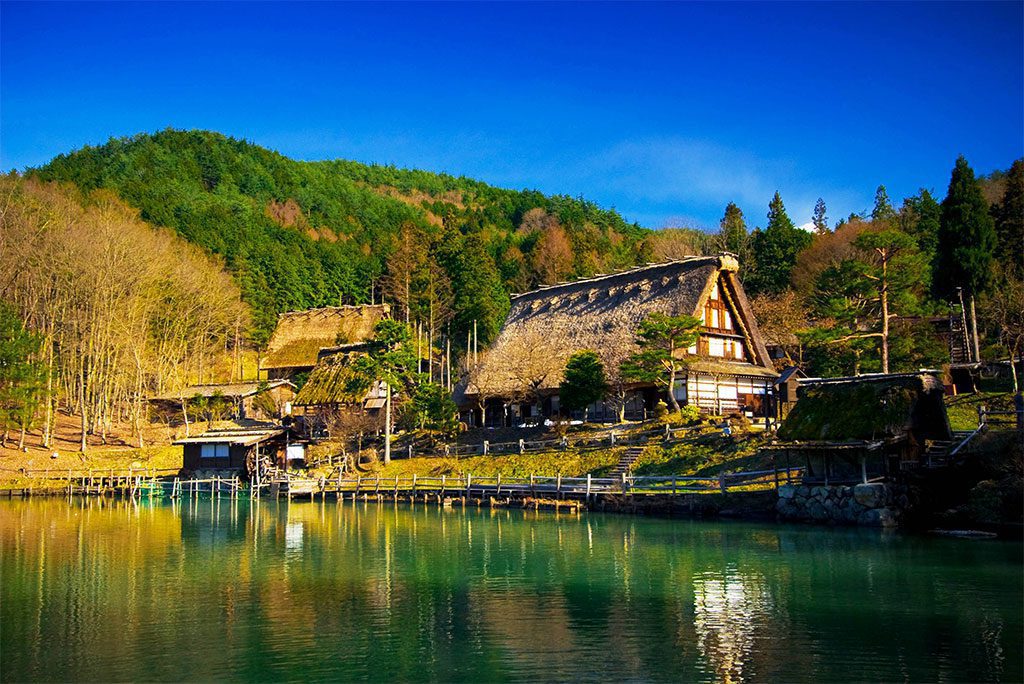
Step back in time and experience the charm of Hida Folk Village. Image source: Yupgi/Shutterstock.com
The little city of Takayama, located in the northern Japanese Alps of Central Honshu, is a beautiful spot to visit. It is one of the most popular tourist spots in the area because of its rich history, beautiful riverfront location, and unique culture and traditions.
Historic buildings from the Edo era, as well as sake breweries, shops, and wonderful old merchants’ residences may be found in the city’s well-preserved historic district. In Takayama, there are various shrines, temples, and museums, as well as frequent morning markets by the river. Hida Folk Hamlet is a recreation of a mountain village with farmhouses with thatched roofs and artists who make goods from the area.
Sanno Matsuri and Yahata Matsuri, two of Takayama’s most prominent festivals, are testaments to the town’s rich history and customs. Carnival-themed floats march through the city, which is illuminated by lanterns during the celebrations. During festivals, a lot of people come to the area to enjoy the festive mood and atmosphere.
4. Hakone
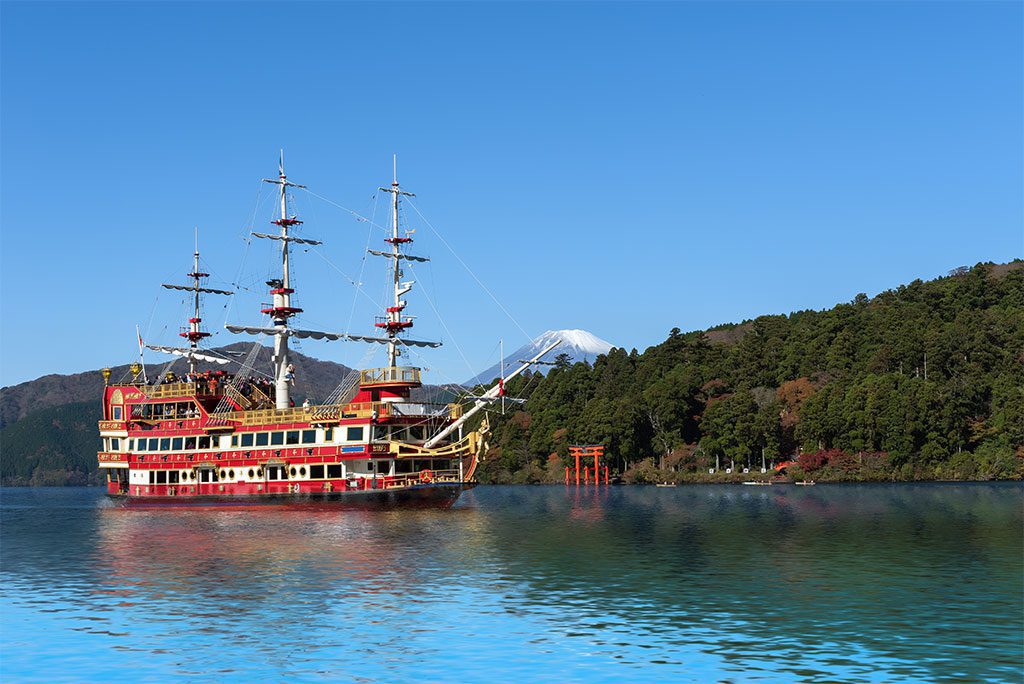
Find tranquility at the iconic red torii gate on Lake Ashi’s shore. Image source: warasit phothisuk/Shutterstock.com
Hakone is a renowned tourist destination in Japan because of its stunning mountain scenery, soothing hot springs, and several world-class art museums. Ashi is on the banks of calm Lake Ashi in the southwest of Tokyo, with Mount Fuji looming in the background.
Hakone is a beautiful town with several lonsens and ryokans. If you come, be sure to stay at one of these traditional inns or bathhouses. In addition, the city’s galleries and museums have some beautiful sculptures and works of art, and shops and boutiques sell handmade goods made in the area.
Take a trip on one of the pirate ships that ply the waters of Lake Ashi, which is a renowned tourist attraction. It’s possible to get a bird’s-eye view of the lake and Mount Fuji from the upper decks of these vessels. If you want to get away from the crowds in Hakone, you can go hiking in Fuji-Hakone-Izu National Park. There are many quiet hiking trails you can try.
3. Nara
The first permanent capital of Japan was built in 710 in the city of Nara, formerly known as Heijo. Because of threats from prominent Buddhist monks, the government relocated the capital in 784. The city, which is less than an hour away from Kyoto, has a multitude of ancient landmarks, including several temples and shrines.
Most of the city’s primary attractions may be located in Nara Park, a lush green space that also serves as a haven for the city’s many friendly deer. Here, Kofuku-ji and Kasuga Taisha’s magnificent stone lanterns may be seen here, as well as a few well-maintained Japanese gardens. With its imposing Great Buddha and awe-inspiring temple design, Todai-ji Temple is the place to see in Kyoto.
Visit Nara’s superb museums and lovely Naramachi old commercial quarter in addition to the city’s many well-preserved ancient structures. The historic centre is a must-see for anybody interested in history, art, or architecture.
2. Kyoto
Kyoto was the imperial capital of Japan for more than 1,000 years, although now it is just the capital of Kyoto prefecture. Kyoto is the place to go if you want a taste of Japan’s history and culture. This city was spared most of the severe bombing that happened across the rest of Japan during World War II because of its historical value. There are almost 1,000 temples and shrines in this 1.5 million-person metropolis, including the most famous of them all—the Golden Pavilion.
Kyoto is also home to the stunning Nijo Castle, the ancient palace of the Tokugawa shoguns, as well as the well-preserved historic area of Higashiyama and the district of Gion, where the city’s famed geishas may be found. In addition to its rich cultural heritage, Kyoto is home to a world-class aquarium and a Ninja Training Dojo, where visitors may try their hand at Japanese assassination.
1. Tokyo
If you’re looking for an opportunity to meet new individuals, Tokyo is the place for you. The Tokyo metropolitan region is the world’s most populated. From the traditional gardens of spring cherry blossoms to the bustling fish market of Tuskiji. From shrines to karaoke bars, Tokyo combines the old and the new.
It’s impossible to be bored in Tokyo, where even a stroll down the street can be exciting. In this city’s Shibuya crossroads, the controlled mob crossing is legendary, and in its Harajuku district, the extraordinary street fashion, including but not limited to goth-Lolitas, punks, and adorable schoolgirls, is recognised across the globe. The Meiji Shrine, Tokyo’s most renowned shrine, and Sensoji Temple, one of the city’s oldest temples, are both located in the city.
The Tsukiji Fish Market is also a good option for seafood lovers. The world’s busiest and biggest fish market is a must-see for every visitor to Tokyo, even though it isn’t a typical tourist destination in other cities. It’s also one of the top sushi restaurants in the world. Just be aware that you’ll be eating sushi for breakfast since you’ll be going to the fish market early in the morning. The Imperial Palace, the palace of the emperor, and Tokyo Tower are two more must-see sights in Tokyo. Fortunately, travelling about Tokyo is a breeze because of the city’s extensive and user-friendly public transportation network. If you have the opportunity, take a day excursion to the majestic Mount Fuji.


